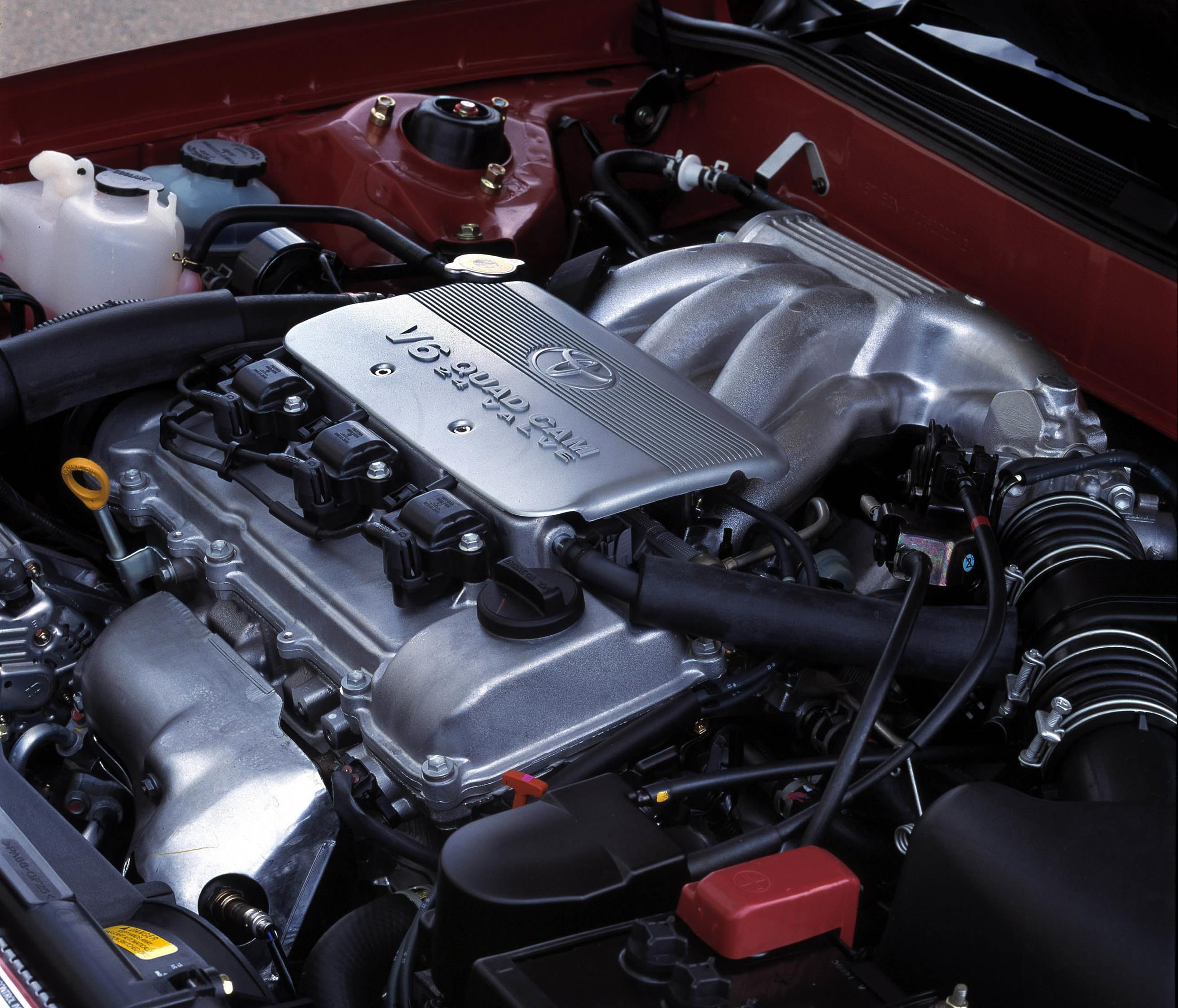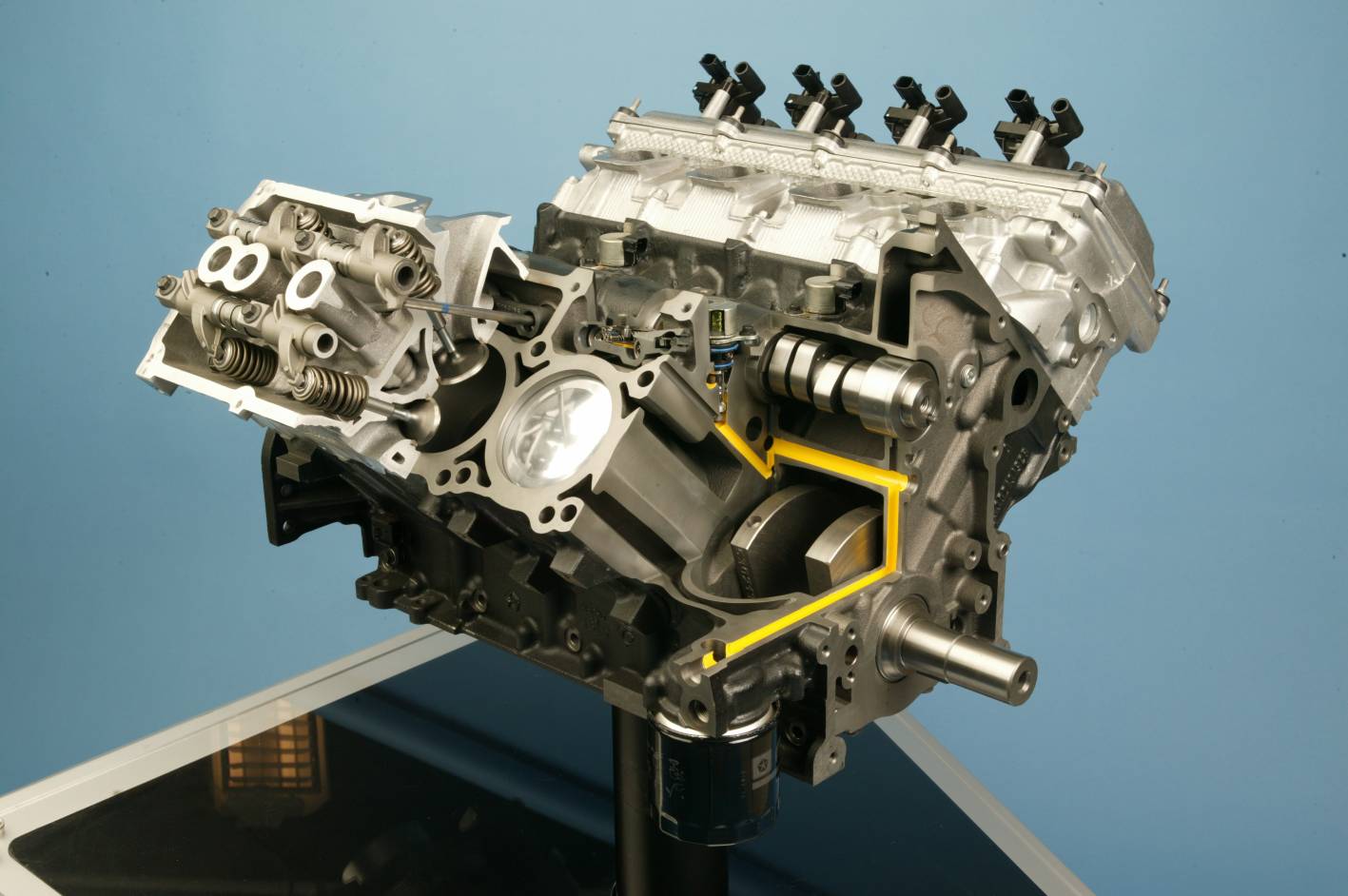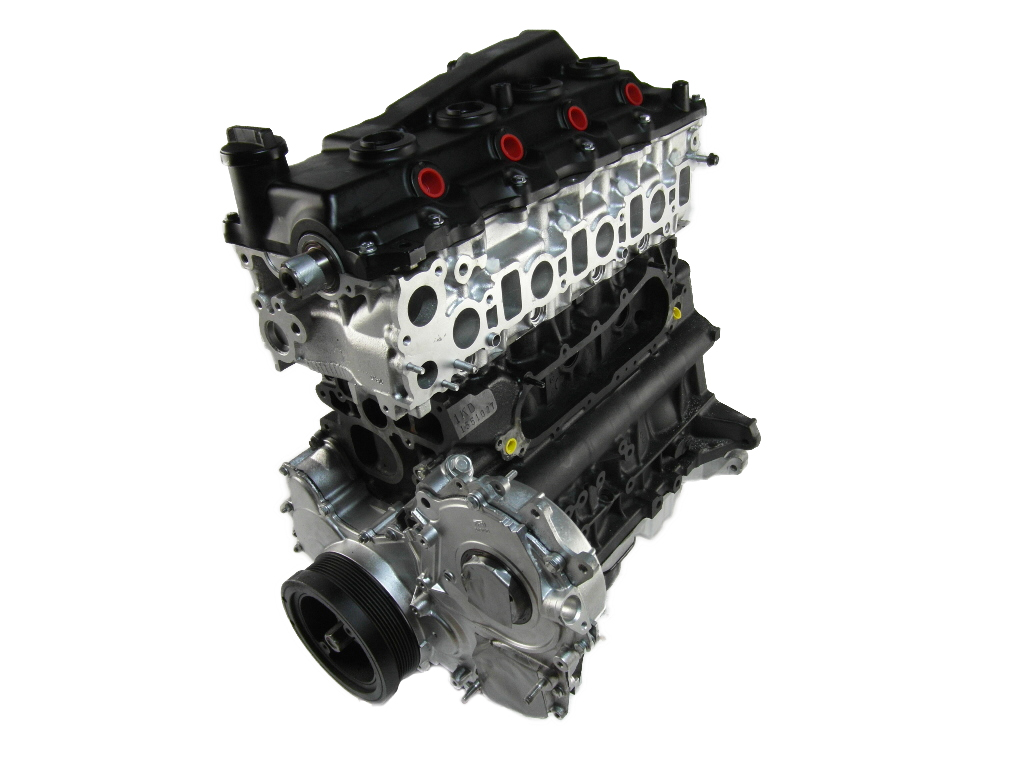M62 crankcase
For Europe and Australia, the standard M62 crankcase was made from aluminium alloy AlSi9Cu3 as per the M60 engine. For these engines, the cylinder bores were coated in a nickel-dispersion process (Nikasil).
For markets with high-sulphur petrol, the M62 crankcase was made from an aluminium-silicon (Alusil) alloy in a chilled casting process. The cylinder bores then underwent an exposure honing or ‘soft stripping’ process that removed the aluminium from the cylinder surface such that hard silicon particles remained. Markets for the Alusil crankcases included the USA, Canada, UK, South America, Mexico, Saudi Arabia and South Africa. For the Alusil crankcases, the pistons had a ferrous coating.
The M62 engine had a forged steel crankshaft with a central hollow cavity; the crankshaft was mounted in five bearings and had six counterweights. As per the M60 engine, the M62 had forged sintered connecting rods, though new anti-fatigue bolts were used to secure the connecting rods to the crankshaft
Like the M60, the M62 engine had a pressure-controlled crankcase ventilation system in which oil vapors would enter a cyclone-type liquid/vapor separator that allowed the liquid oil to return to the oil pan and the oil vapors to be drawn into the intake manifold via a pressure control valve.
M62 cylinder head
The M62 engine had a cross-flow cylinder head that was produced from die-cast aluminium and had integrated camshaft housings. The double overhead camshafts had solid high-carbon steel castings that rotated in five bearing journals. While the intake camshafts were driven by a single roller chain (primary chain) off the crankshaft, the exhaust camshafts were driven off the intake camshafts, also by single roller chains (secondary chains). Furthermore, hydraulic chain tensioners were integrated in each cylinder head. To reduce mass, the M62 engine had a magnesium alloy cylinder head cover.
For the M62 engine, the masses of the hydraulic tappets, valve springs and upper valve spring retainer were reduced.
M62 ignition
The M62 engine had new ignition coils that shared their design with those on the M52 engine. While the hot film air mass meter (HFM) was carried over from its M60 predecessor, the M62 engine had Bosch Montronic DME 5.2 engine management which was previously introduced on the M73.
M62TU engine
Available from 1998, the M62TU (Technical Update) engine introduced the following changes:
- BMW’s VANOS (VAriable NOckenwelle Steuerung) which enabled the timing of the intake camshaft to be advanced or retarded. For the M62TU, the intake camshafts could adjust simultaneously within 20 degrees of the camshaft’s rotational axis for a maximum span of 40 degrees crankshaft rotation;
- Electronic throttle control system (EDK);
- Bosch Digital Motor Electronic Control ME 7.2;
- A non-return fuel rail; and,
- Hot Film Mass Air Sensor 5 (HFM 5), a combined air mass/intake air temperature sensor (such that a separate air intake temperature sensor was no longer required).
S62B50: E39 M5 and E52 Z8
The S62B50 was a high performance version of the M62 engine that was developed for the E39 M5 and E52 Z8. The S62B50 was the first V8 BMW Motorsport ‘M’ engine and, unlike previous ‘M’ engines which were produced at Garching, Germany, the S62B50 engine was assembled at Dingolfing.
The S62B50 engine had a 94.0 mm bore and 89.0 mm stroke for a capacity of 4941 cc. Compared to the M62, changes for the S62B50 engine included:
- A specially weighted forged crankshaft with metal plugs for fine balancing;
- Connecting rods that were forged as one piece and balanced from end to end. Furthermore, balancing pads were placed on both the small and big ends of the connecting rods;
- Re-jacketed cylinder heads for cross-flow cooling;
- Special steel head gaskets to prevent leakage between bores;
- Fuel pressure up to five bar;
- Variable intake and exhaust camshaft timing (double VANOS) – the first BMW V8 engine to do so. Valve timing varied over a range of 60 degrees relative to crankshaft rotation;
- Hollow, nodular cast iron camshafts with double-row timing chains;
- Airflow controlled by eight individual throttle bodies (one per cylinder) which were electronically actuated (i.e. ‘drive by wire’). The driver was also able to select from ‘normal’ or ‘sport’ throttle response settings;
- Two scavenging oil pumps (one per cylinder bank);
- Pistons with specially shaped cut-outs in the crowns and a compression ratio of 11.0:1;
- A maximum engine speed of 7000rpm; and,
- Bosch Motronic MSS 52 engine management.
| Engine | Capacity | Peak power | Peak torque | C.R. | Models | Years |
|---|---|---|---|---|---|---|
| M62B35 | 3498 cc (84.0 x 78.9) |
173kW at 5800rpm | 320Nm at 3300rpm | 10.0:1 | E39 535i | 1996-97 |
| E38 735i, E38 735iL |
1996-98 | |||||
| M62TUB35 | 3498 cc (84.0 x 78.9) |
175kW at 5800rpm | 345Nm at 3800rpm | 10.0:1 | E38 735i, E38 735iL |
1998-01 |
| 180kW at 5800rpm | 345Nm at 3300rpm | 10.0:1 | E39 535i | 1998-03 | ||
| M62B44 | 4398 cc (92.0 x 82.7) |
210kW at 5700rpm | 420Nm at 3900rpm | 10.0:1 | E39 540i | 1996-98 |
| E38 740i, E38 740iL |
1996-98 | |||||
| E31 840Ci | 1995-99 | |||||
| M62TUB44 | 4398 cc (92.0 x 82.7) |
210kW at 5400rpm | 440Nm at 3600rpm | 10.0:1 | E39 540i | 1998-03 |
| E38 740i, E38 740iL |
1998-01 | |||||
| E53 X5 4.4i | 1999-03 | |||||
| M62B46 | 4619 cc (93.0 x 85.0) |
255kW at 5700rpm | 480Nm at 3700rpm | 10.5:1 | E53 X5 4.6is | 2002-04 |
| S62B50 | 4941 cc (94.0 x 89.0) |
294kW at 6600rpm | 500Nm at 3800rpm | 11.0:1 | E39 M5 | 1998-03 |
| E52 Z8 | 2000-03 |
BMW M62 and S62 VANOS problems
M62TU VANOS failure
For the M62TU engine, the VANOS unit may fail due to deterioration of the VANOS seals and symptoms include a rattling noise after cold starts (VANOS rattle), a clattering noise at idle once the engine has warmed up, a loss of bottom-end power and uneven power delivery. The VANOS seals comprise:
- An O-ring at the outer perimeter of the VANOS plastic housing; and,
- A dynamic rod seal at the inner perimeter of the same plastic housing.
Over time, the O-ring at the outer perimeter of the housing – made of Viton – experiences compression (flattening) and fails. Due to the sealed nature of the VANOS unit, the outer perimeter O-ring can’t be accessed and replaced. However, the VANOS top lip can be pressed down onto the plastic housing to, in turn, press the plastic housing down and set it on a VANOS wall shelf. This seating creates a functional oil seal that provides the oil chamber seal the O-ring was intended to achieve.
The plastic housing inner perimeter rod seal consists of a Teflon ring and backing O-ring; the Teflon ring is susceptible to wear and loss of material, causing it to lose its functional characteristics. Furthermore, the rod seal O-ring also experiences compression, exacerbating the effect of wear to the Teflon ring.
S62 VANOS failure
Over time, the piston seal O-rings compress (flatten) and the Teflon rings wear – this can lead to lower bottom-end torque, uneven power delivery or an overall loss of power. Furthermore, the static seal O-rings also experience compression over time and can cause leaks.
S62 VANOS rattle
Apparent at idle or engine speeds from 1800 to 2200 rpm, the VANOS rattle is caused by wear in the variable valve timing helical (slanted) gears which are found on the camshaft sprocket and splined shaft. Wear of the helical gear allows the camshaft to have lash movements that engage the splined shaft axially. The axial play that causes the rattle is found on the helical gears and the splined shaft bearing.
Removing the splined shaft bearing axial play significantly reduces the VANOS rattle. The splined shaft bearing is made of a thick washer and two thrust (roller) bearings. The washer and two thrust bearings are encased in a ring and two outer flat washers; the complete bearing is housed inside a splined shaft cavity that is closed with a threaded cover.
Since the thrust bearings and centre washer have tight tolerances, they cannot be replaced. To fix, however, the ring can be replaced with a ring that is made of bearing steel that has been hardened and ground to bearing standards – its height can be controlled to provide a tight axial bearing fit. Furthermore, outer flat washers can be combined to provide the necessary height for a tight fit.
A diaphragm spring incorporated in the intake and exhaust sprockets also affected VANOS rattle since this spring loads the sprocket rotational movement to dampen quick movements. Since the spring weakens over time, replacing it with a new one is often needed to completely fix the rattle.




